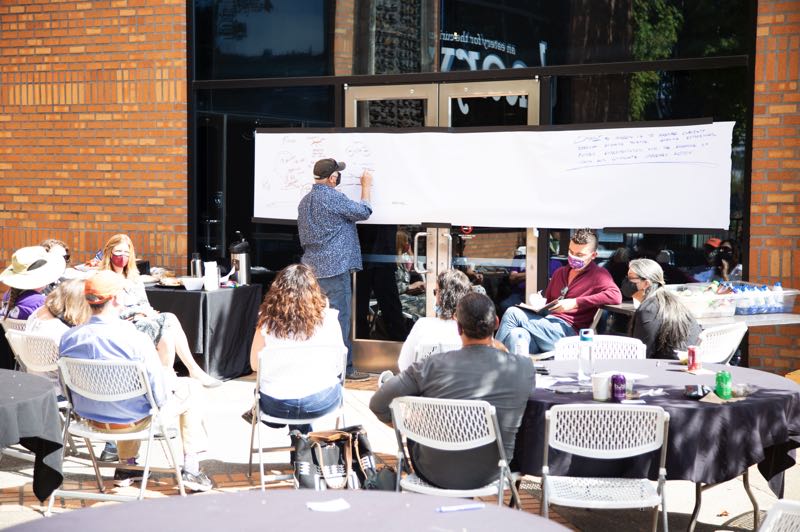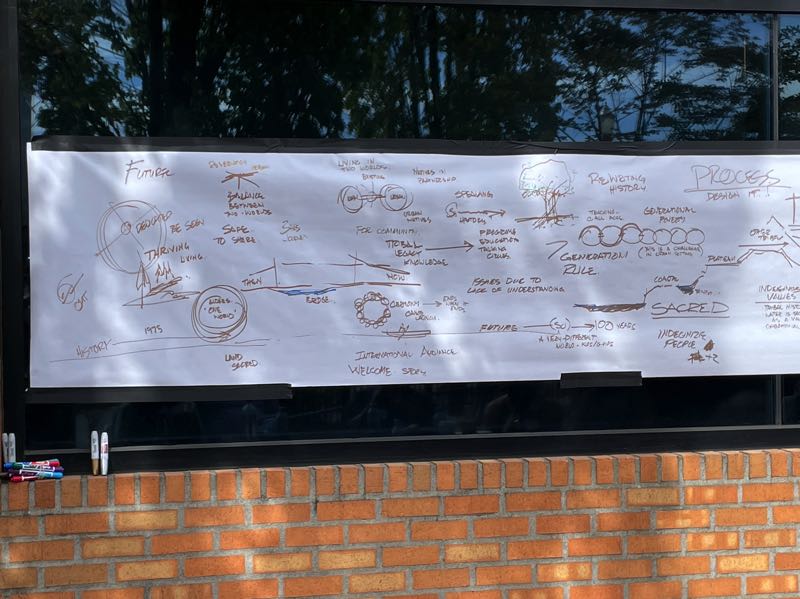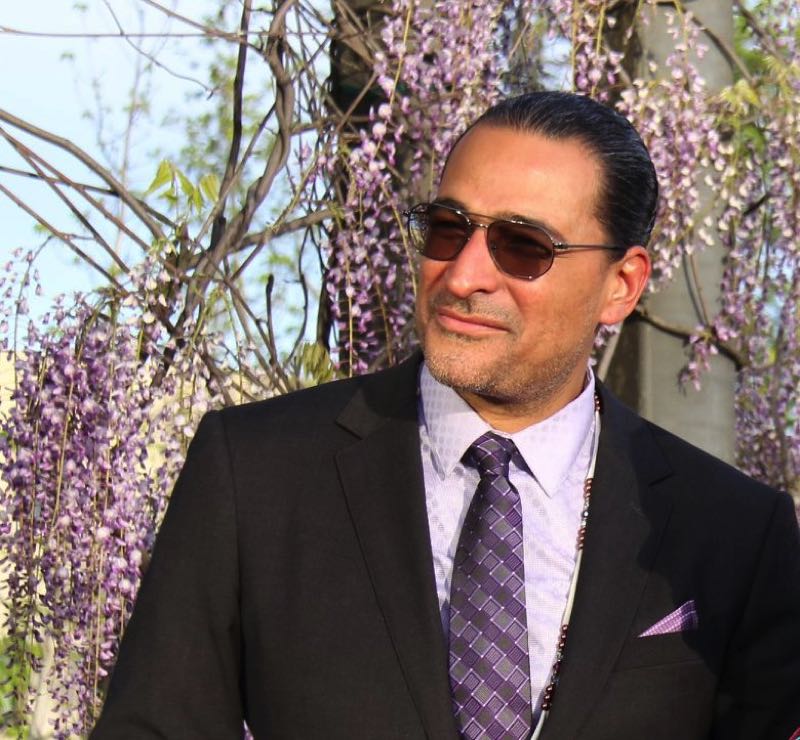By Jules Rogers
Business Tribune
Publication date: March 10, 2022
The project is intended to provide Indigenous and Western education surrounding river science, and more.

The Oregon Museum of Science and Industry’s 3-million-square-foot master plan for its district is still in the early stages, but much work already is being accomplished behind the scenes. In particular, the project already includes some early concept plans for a Waterfront Education Park and Center for Tribal Nations.
OMSI President and CEO Erin Graham told Pamplin Media Group that, as OMSI was working on developing the vision and concept for its master plan, it was talking with representatives from the Columbia River Inter-Tribal Fish Commission and the Affiliated Tribes of Northwest Indians (ATNI) — both now co-developers partnering with OMSI on these two projects.
The commission and ATNI convened a Center for Tribal Nations Advisory Committee that includes 24 members and alternates representing numerous tribal governments, community organizations and the Portland Indigenous community at large, to advise the two projects.
“What we learned and didn’t know before we had this conversation with them was also a desire to create a place for different tribal entities and tribal government to gather on the waterfront, and they were wondering whether this might be an opportunity to create some sort of center on the river,” Graham said. “This seemed like an opportunity where we could dive deeper into those conversations and figure out what was possible here.”
Graham said the OMSI District is meant to be an inclusive community destination with innovation, culture, arts and science learning at its heart. OMSI created this vision in collaboration with local tribes, regional governments, nonprofits, businesses and other partners to give feedback along the way.
“We had previously thought about the opportunity for some kind of waterfront education park, because, as you know, the district has about one-third of a mile of waterfront access. We know it’s a wonderful teaching opportunity, not only for visitors to OMSI but to the public, about the river and ecology and even restoration,” Graham said.
Graham said the waterfront education park currently is in the concept development phase, but that it might include some overlooks, green spaces, native plants, fish habitats and education about the fish, flora, fauna and science related to the river and plants.
“There are a lot of science skills that OMSI helps people connect to in the natural world that were part of Indigenous ways of understanding the world and knowledge,” Graham said. “It’s a very natural connection for us. We even have some experience within the museum that reflect those types of stories from different tribes and different cultures as a way to understand science and STEM (science, technology, engineering and math studies).”
Also, there are other complications the landscape engineers will need to tackle. An agency or museum can’t just start digging along the riverbank — they will have to maintain the riverbank during development and plan for spring flood runoff, work around the freeway and the bridge, and incorporate environmental controls, and legal and regulatory requirements into the design ideas.
As for the Center for Tribal Nations, the vision is being developed with much input from the advisory committee, Graham said.
The center would include spaces that could be used for ceremonies, offices, meeting areas and more.
“It’s a wide variety of ideas right now, and the group is helping to craft the vision and put together a programming plan,” Graham said. “We’re right in the middle of it, but it’s contemplated to be a vertical development within the OMSI District — but that’s about what we know right now.”
The OMSI district master plan is funded by a $750,000 Metro grant so far, but the museum is still in the process of determining the full budget for the entire master plan through construction, which includes sewer, street, parking and waterfront improvements.
Brainstorming for the vision development work has been in the process for about 18 months. The concepts are expected to be finalized by December, with a construction timeline to follow depending on funding and other partners.
The Waterfront Education Park
OMSI has an existing long-term relationship with the Columbia River Inter-Tribal Fish Commission. Graham said they worked together on the summer camp Salmon Camp and various other projects that highlight and elevate Indigenous culture and science.
The commission is focused on river and fish health and science, coordinating management policy and providing fishery technical services.
Commission Communications Director Jeremy FiveCrows is a member of the Nez Perce tribe. FiveCrows told the Business Tribune that the commission represents the four treaty fishing tribes in the Columbia Basin.

“We were approached initially for the waterfront education park aspect of it … because that really aligns with what we do — not only with habitat restoration and fixing watersheds for salmon, but also just teaching people why salmon and why rivers are important, why we should connect to them,” FiveCrows said.
“The general Portland population would develop a more meaningful, close relationship to the Willamette, and also want to protect it and protect water in general.”
FiveCrows said the waterfront park is nice, but is completely man-made with the seawall, and that there now may be better opportunities to have a healthy river and promote a healthy connection with it.
“Salmon are the icon of the Pacific Northwest: The old adage was, the Pacific Northwest is wherever salmon can return to, so that’s why they kind of represent the lifeblood of this region,” FiveCrows said. “Even if you don’t eat salmon, they impact the whole region — the ecosystem, the power grid, the way we operate the hydroelectric system. They are right there at the center. They’re important even if you don’t have salmon filet all the time — they represent the wildness, and the connection to this place. So that’s why the tribes still maintain that cultural connection — and we hope that others will develop their own connection to it, too, because we’re not going to save things that don’t mean anything to us, and frankly, the salmon need all the help they can get.”
FiveCrows said the OMSI project might offer an opportunity to develop improvements to the marine area, such as potential salmon rearing habitats.
“If it’s done right … it’s going to encourage repopulation, or the growth of different animals, different fish,” FiveCrows said. “It’s another opportunity to learn what salmon need, what is a healthy habitat, and right now lots of the site is so built up and industrial. It will be an interesting challenge along the bank, and the big freeway and all the noise right above the location — so it’s a really interesting and exciting challenge of, how do you make a nature and learning park in those parameters?”
FiveCrows said the waterfront trail area meanders through a variety of settings that are entirely man-made and industrial. The development team would want to add a stretch designed to draw attention, gaze and awareness to the river and healthy bank while providing education about the tribes.
“For the waterfront education park, I would hope that visitors would see tribal efforts and the tribal connection to this river, and that there’s a whole history that predates the founding of the city of Portland to this place, and to learn more about the tribes that also call this place home — but also to learn about what a healthy river is, and make their own connection in a way to a healthy river,” FiveCrows said.
“Something I’m personally really excited about is that OMSI, with their commitment to inclusion, that concept of weaving together Western science with traditional ecological knowledge, tribal science, and ways of seeing how both of those world views can work together and how for the benefit of the region, the betterment and understanding of the world around us.”
The Center for Tribal Nations
The nonprofit Affiliated Tribes of Northwest Indians (ATNI) is another organization helping to develop the Center for Tribal Nations as part of the OMSI District master plan. ATNI Deputy Director James Parker told the Business Tribune the organization represents more than 50 tribes across the Pacific Northwest.

“We’re really excited about the promise of (this project), and when we talk about what the vision is, it’s the restoration of the Native people right here on the shores of the Willamette,” Parker said. “In pre-Colonial times, it was a center for intertribal commerce and fishing and life. How do we re-create and bring that story back and actually create this space-based opportunity to provide a place for investment and growth and economic opportunity for tribal people?”
Parker said the education park is an extension of the group’s partnership with OMSI and a showcase of tribal ecological knowledge, science and engineering.
“We see kind of a mixed-use office space, cultural space, educational space, commercial space and consolidation of Native tribal and intertribal organizations, all centered right on the Willamette, and a way to really provide a cultural embassy and platform for functional exchange and education about Native people, both fixed, historical and where we are today in and around the region,” Parker said.
“We think it’s always important to understand the land that you are on, and the connection to the people who have existed here from pre-Colonial times,” Parker said. “One of the things we struggle with in urban centers is the invisibility of tribal communities in spaces that are traditionally their homelands, so this is a great opportunity to really allow us to build the narrative and experiences for the Native people.”
Parker said the heart of ATNI’s involvement is ensuring both the urban Native American population that resides in the area and makes use of the Willamette River, as well as tribal nations across the region, have a voice in what this property and its uses will include and what will be its best uses as identified by the community.
“A lot of what we’re looking at for the education park along with the Center for Tribal Nations is ideas around Native-centered affordable housing, a Native-owned boutique hotel, perhaps a Native health and wellness clinic — these are ideas we’re seeing rise to the top,” Parker said. “That process to get there is really important — where we look at Native vendor participation and ensure that Native Americans that have expertise in building and design and engineering and planning are all part of this project moving forward.”
Parker said the OMSI tribal center is part of an economic strategy.
“Really at its heart, this is an investment by the city, by the region, by regional bodies and, really, an opportunity to bring forward economic opportunity and the opportunity for prosperity for so many of our marginalized communities that have not been able to fully participate in so many different ways,” Parker said. “OMSI is a great match, just in terms of what their mission is and how their mission relates. OMSI adds objectives around financial stewardships, equitable community buildings, educational excellence, and all those are layered in multifaceted ways in this project.”
Source: The Portland Tribune